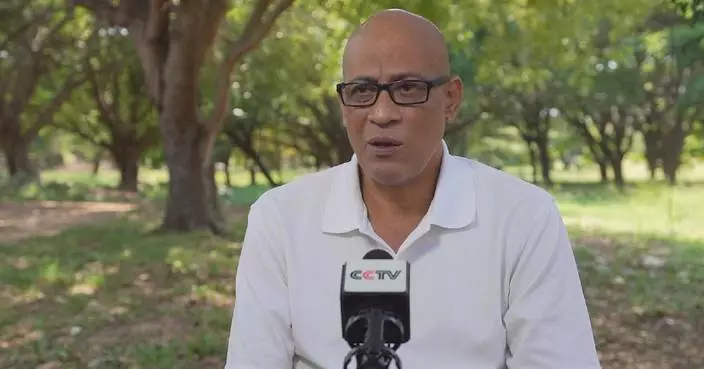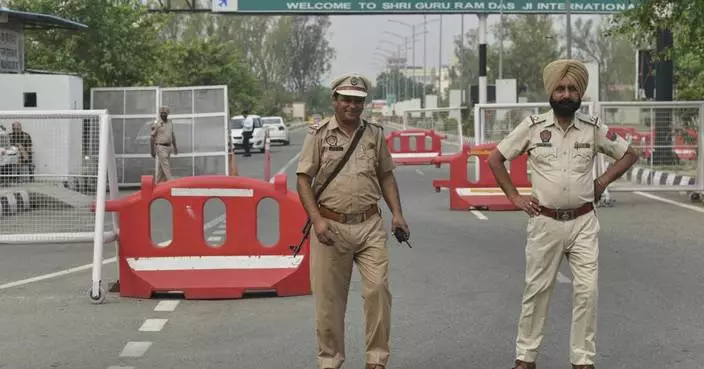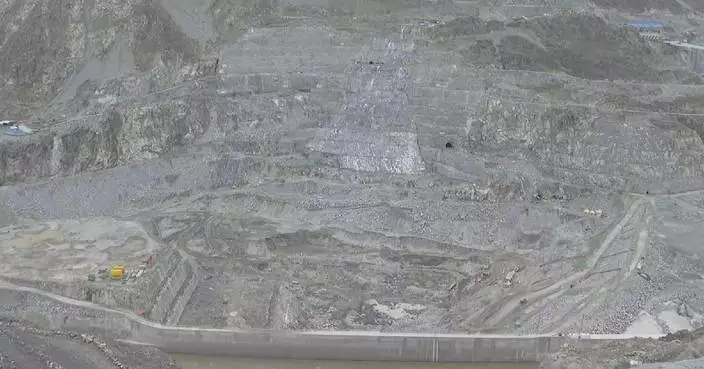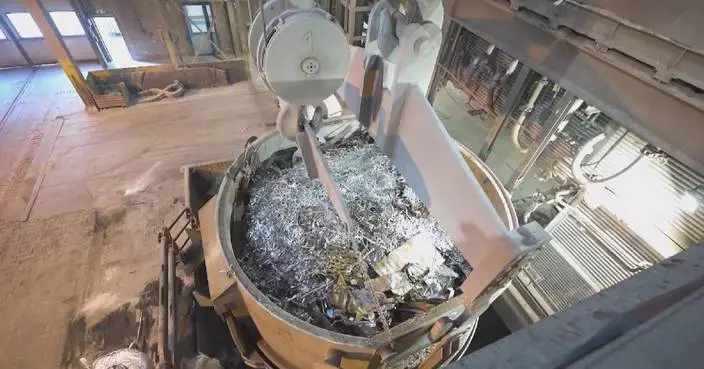LANDOVER, Md. (AP) — Raheem Morris and the Atlanta Falcons left five timeouts unused, and they may have an extended chance to linger over those mistakes.
The Falcons have run out of time to control their own path to the playoffs after mismanaging the clock multiple times in a 30-24 overtime loss to the Washington Commanders. They needed a victory to set up a win-and-get-in situation in the regular-season finale, and now Tampa Bay is in the driver's seat for the NFC South title.
Morris declined to use all three of his timeouts at the end of the first half before settling for a field goal. He had two left in the waning minutes of regulation before Riley Patterson tried a 56-yard field goal attempt with two seconds left that fell short.
The first-year coach acknowledged he “probably could have” taken one after Michael Penix Jr. connected with Darnell Mooney on a 25-yard completion with 40 seconds left. Instead, the clock wound down to 17 seconds because he was “trying to save that timeout.”
“In hindsight, it could have been a better decision to take that timeout, but I wanted to have the opportunity to move up there so you can always second guess those things,' Morris said after his team's defeat that punched the Commanders' ticket to the playoffs. "Can always second-guess those motives. Can always go back and look at it to see if you could have snapped it a little quicker. But I really believe we can get our operation time a little faster and to save that timeout."
Questionable coaching came back to bit the Falcons, including a near-total abandonment of the running game that was picking Washington apart for much of the first half. Bijan Robinson had 13 carries for 82 yards and two touchdowns until there was one minute left before halftime, and he was handed the ball just four more times for 8 yards the rest of the way.
Penix, the rookie quarterback taken with the eighth pick and making his second NFL start, pointed to a three-and-out in the third quarter as the culprit behind Atlanta becoming unbalanced. The Commanders had the ball for 12:53 and the Falcons for just 2:07 in the third.
“We didn’t really have the ball much," said Penix, who was 19 of 35 for 223 yards, a touchdown pass to Kyle Pitts and an interception. “I believe we ran three plays. We just got to sustain drives. We can’t go three-and-out. Our mindset each and every time we step on the field is to get points. Whenever we have the opportunity based on that, it could have made us go one way or the other passing or running the ball.”
The Falcons had the chance to go up 21-7 instead of 17-7 at halftime, though Morris defended his strategy as a way to not leave Jayden Daniels and Co. the chance to get the ball back: "Took the field goal. Got out of dodge.”
Penix deferred to Morris on when to use timeouts.
“That’s on Coach Raheem,” Penix said. “He calls the timeouts whenever he feels fit. He trusted in us to get the plays off and make the next play. We all trust coach’s judgement on that, so that’s what we are going to lean on.”
The Falcons must now lean on New Orleans to beat Tampa Bay. After five losses in seven games, they need that and a victory against Carolina to reach the playoffs.
AP NFL: https://apnews.com/hub/NFL

Atlanta Falcons quarterback Michael Penix Jr. (9) celebrates a touchdown during the second half of an NFL football game against the Washington Commanders, Sunday, Dec. 29, 2024, in Landover, Md. (AP Photo/Stephanie Scarbrough)

Atlanta Falcons quarterback Michael Penix Jr. (9) reacts during the second half of an NFL football game against the Washington Commanders, Sunday, Dec. 29, 2024, in Landover, Md. (AP Photo/Stephanie Scarbrough)

Atlanta Falcons head coach Raheem Morris talks to reporters after an NFL football game, Sunday, Dec. 29, 2024, in Landover, Md. The Commanders won in overtime 30-24. (AP Photo/Stephanie Scarbrough)

Atlanta Falcons head coach Raheem Morris walks on the field before an NFL football game against the Washington Commanders, Sunday, Dec. 29, 2024, in Landover. (AP Photo/Stephanie Scarbrough)
MOSCOW (AP) — Russia marked the 80th anniversary of the defeat of Nazi Germany in World War II with a massive military parade on Red Square on Friday attended by President Vladimir Putin and foreign leaders, including Chinese President Xi Jinping and Brazilian President Luiz Inácio Lula da Silva.
Victory Day, which is celebrated in Russia on May 9, is the country’s most important secular holiday. The parade and other ceremonies underline Moscow’s efforts to project its global power and cement the alliances it has forged while seeking a counterbalance to the West amid the conflict in Ukraine that has dragged into a fourth year.
World War II is a rare event in the nation’s divisive history under Communist rule that is revered by all political groups, and the Kremlin has used that sentiment to encourage national pride and underline Russia’s position as a global power.
The Soviet Union lost 27 million people in what it calls the Great Patriotic War in 1941-45, an enormous sacrifice that left a deep scar in the national psyche.
Speaking at the parade, Putin hailed Russian troops fighting in Ukraine, saying that “we are proud of their courage and determination, their spiritual force that always has brought us victory.”
The parade featured over 11,500 troops and more than 180 military vehicles, including tanks, armored infantry vehicles and artillery used on the battlefield in Ukraine. As a reminder of Russia's nuclear might, launchers for the Yars nuclear-tipped intercontinental ballistic missiles rolled across Red Square.
Fighter jets of Russian air force's aerobatic teams flew by in close formation followed by jets that trailed smoke in the colors of the national flag.
The parade was the largest since Moscow sent troops into Ukraine in February 2022 and had the highest attendance by global leaders in a decade.
Afterwards, Putin shook hands with Russian military officers who led the troops on Red Square and spoke to a group of medal-bedecked senior North Korean officers who watched the parade, hugging one of them.
Last month, Putin thanked North Korea for fighting alongside Russian troops against Ukrainian forces and hailed their sacrifices as Pyongyang confirmed its deployment for the first time.
The Russian and North Korean statements that underlined their expanding military partnerships came after Russia said that its troops have fully reclaimed the Kursk region that Ukrainian forces seized in a surprise incursion last year.
Festivities this year were overshadowed by Ukrainian drone attacks targeting Moscow and severe disruptions at the capital’s airports.
Russian flag carrier Aeroflot on Wednesday morning canceled more than 100 flights to and from Moscow, and delayed over 140 others as the military were repelling repeated Ukrainian drone attacks on the capital.
Russian authorities have tightened security ahead of the parade and cellphone internet outages have been reported amid electronic countermeasures aimed at foiling more potential drone attacks.
Putin had declared a unilateral 72-hour ceasefire starting May 7 to coincide with the Victory Day celebrations, but warned that Russian troops will retaliate to any attacks. Moscow has been reluctant to accept a U.S.-proposed 30-day truce that Ukraine has accepted, linking it to a halt in Western arms supplies to Ukraine and Kyiv’s mobilization effort, conditions Ukraine and its Western allies have rejected.
Ukrainian authorities reported scores of Russian strikes on Friday that killed at least two people in the Kherson and Zaporizhzhia regions and damaged buildings.
As the Red Square parade and other festivities unfolded in Moscow, dozens of European officials were meeting in Lviv, in western Ukraine, to endorse the creation of a special tribunal tasked to prosecute Russian officials accused of war crimes.
“Today, we celebrate Europe Day with Ukraine and its people,” EU foreign policy chief, Kaja Kallas, wrote on X, adding that “we stand united with Ukraine for a lasting peace.”

Chinese President Xi Jinpin, left, Russian President Vladimir Putin, centre, Tajikistan's President Emomali Rakhmon, right, and President of the Republic of Congo Denis Sassou Nguesso, centre right, attend a wreath laying ceremony at the Tomb of the Unknown Soldier in Alexander Garden after the Victory Day military parade in Moscow, Russia, Friday, May 9, 2025, during celebrations of the 80th anniversary of the Soviet Union's victory over Nazi Germany during the World War II. (Yuri Kochetkov/Pool Photo via AP)

Russian Defense Minister Andrei Belousov is driven along Red Square in an Aurus car during the Victory Day military parade in Moscow, Russia, Friday, May 9, 2025, marking the 80th anniversary of the Soviet Union's victory over Nazi Germany during the World War II. (Alexander Wilf/Photo host agency RIA Novosti via AP)

From second right: Turkmenistan President Serdar Berdimuhamedow, Tajikistan's President Emomali Rakhmon, Russian President Vladimir Putin and Chinese President Xi Jinpin watch the Victory Day military parade in Moscow, Russia, Friday, May 9, 2025, during celebrations of the 80th anniversary of the Soviet Union's victory over Nazi Germany during the World War II. (Sergei Bobylev/Photo host agency RIA Novosti via AP)

Russian servicemen take part in the Victory Day military parade in Moscow, Russia, Friday, May 9, 2025, marking the 80th anniversary of the Soviet Union's victory over Nazi Germany during the World War II. (Maxim Bogovid/Photo host agency RIA Novosti via AP)

Turkmenistan President Serdar Berdimuhamedow arrives in Moscow, Russia, Friday, May 9, 2025, for celebrations of the 80th anniversary of the Soviet Union's victory over Nazi Germany during the World War II. (Mikhail Voskresensky/Photo host agency RIA Novosti via AP)

Serbian President Aleksandar Vucic, left, arrives to attend a working lunch with Chinese President Xi Jinping at the The Faceted Chamber of the Kremlin's Grand Palace at the Kremlin in Moscow, Russia, Thursday, May 8, 2025, ahead of celebrations of the 80th anniversary of the Soviet Union's victory over Nazi Germany during the World War II. (Mikhail Metzel, Sputnik, Kremlin Pool Photo via AP)

Russian President Vladimir Putin greets President of Brazil Luiz Inacio Lula da Silva, left, ahead of the Victory Day military parade in Moscow, Russia, Friday, May 9, 2025, marking the 80th anniversary of the Soviet Union's victory over Nazi Germany during the World War II. (Alexey Nikolsky/Sputnik, Kremlin Pool Photo via AP)

President of Russia Vladimir Putin, right, and President of China Xi Jinping talk during a dinner on behalf of the President of the Russian Federation for heads of foreign delegations in the Grand Palace at the Kremlin in Moscow, Thursday, May 8, 2025, ahead of celebrations of the 80th anniversary of the Soviet Union's victory over Nazi Germany during the World War II. (Sergey Bobylev/Photo host agency RIA Novosti via AP)

Military troops stand in formation in Red Square before the Victory Day military parade in Moscow, Russia, Friday, May 9, 2025, during celebrations of the 80th anniversary of the Soviet Union's victory over Nazi Germany during the World War II. (Alexey Maishev/Photo host agency RIA Novosti via AP)
































































